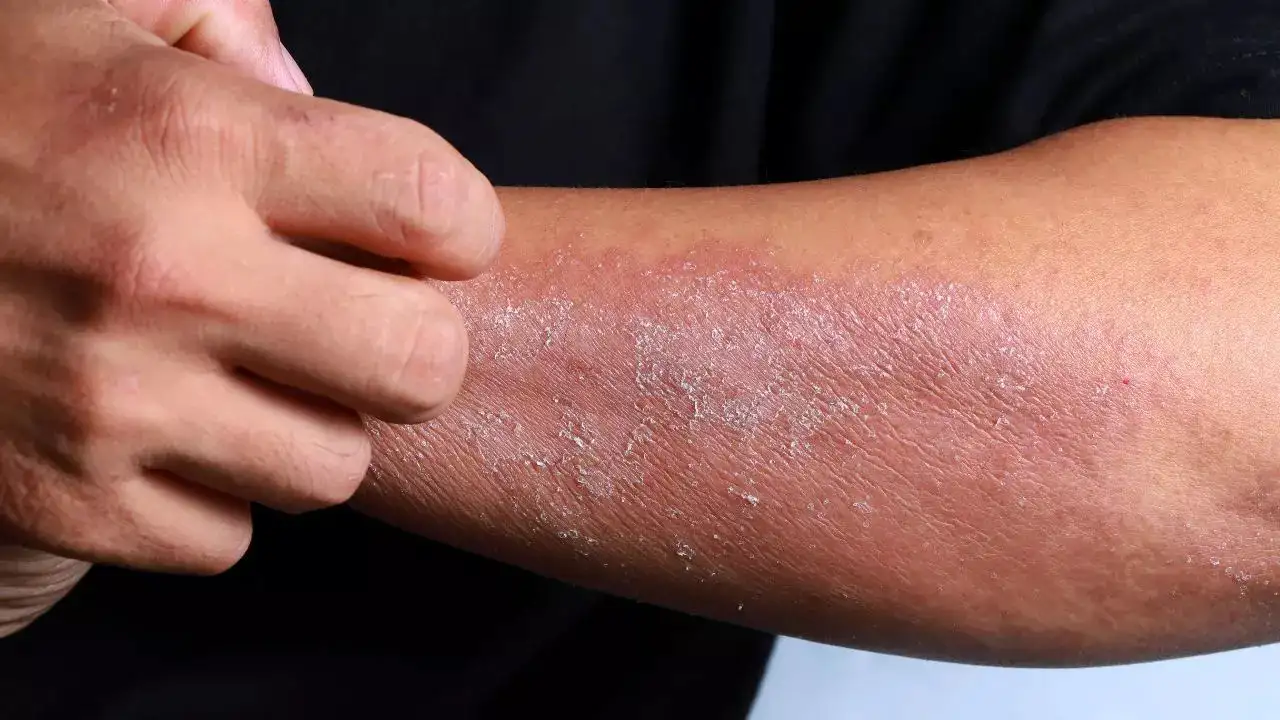Copyright indiatimes

Eczema is a common skin condition that causes itching, redness, and irritation, affecting people of all ages. It can appear anywhere on the body and often follows cycles of flare-ups and calm periods. While generally not serious, eczema can cause significant discomfort and impact daily life if left unmanaged. Recognising the symptoms early and understanding what triggers flare-ups can help in maintaining healthier skin and reducing irritation. With the right care and lifestyle adjustments, most people can effectively control eczema and prevent it from interfering with their overall well-being.Understanding eczema and its causesEczema, also known as atopic dermatitis, is a common chronic skin condition that causes dry, itchy, and inflamed skin. It affects both children and adults, with symptoms ranging from mild irritation to severe flare-ups that can interfere with daily life. Although not contagious, eczema can be distressing and uncomfortable, often triggered by allergens, stress, or environmental factors.The condition develops when the skin’s natural barrier weakens, allowing moisture to escape and irritants or bacteria to penetrate more easily. This leads to redness, itching, and inflammation. Common triggers include genetic predisposition, an overactive immune response, and exposure to irritants such as soaps, detergents, or rough fabrics. Additionally, allergens like dust mites, pollen, and pet dander, along with changes in weather and emotional stress, can exacerbate flare-ups. Recognising the symptoms of eczemaRecognising the symptoms early can lead to better management and fewer flare-ups. According to a study published in the BMJ-Open-Refresh, approximately 6 % of children and adolescents worldwide reported current symptoms of eczema, highlighting the global prevalence of this condition.The look and feel of eczema can vary depending on the type and skin tone, but common signs include:Intense itching, often worse at night.Dry, cracked, or scaly patches of skin.Red or pink areas on lighter skin; brown, grey, or purplish patches on darker skin.Blisters that may ooze fluid if scratched, followed by crusting.Thickened or leathery skin due to chronic scratching (lichenification).Swelling and inflammation in affected areas, which may feel warm or tender.Flare-ups and remissions, where symptoms worsen and then temporarily improve.Post-inflammatory pigmentation changes, causing lighter or darker patches after healing.Burning or painful sensations on sensitive skin, especially after exposure to irritants.Different types of eczemaEczema is not a single condition; it includes several subtypes with unique triggers and patterns:1. Atopic dermatitisThis is the most common and chronic form of eczema, often starting in infancy or early childhood, though it can persist into adulthood. It’s linked to an overactive immune response and a weakened skin barrier.Common signs include extremely dry, itchy patches, often on the face, neck, elbows, or behind the knees. People with atopic dermatitis are also more prone to asthma, hay fever, and food allergies. Managing moisture and avoiding triggers such as harsh soaps and allergens are key to controlling.2. Contact dermatitisThis type occurs when the skin comes into direct contact with an irritant or allergen, triggering redness, itching, or burning sensations.There are two forms:Irritant contact dermatitis: Caused by exposure to soaps, detergents, or chemicals.Allergic contact dermatitis: Triggered by substances like nickel, perfumes, or certain plants.Removing the offending substance and using soothing creams often helps calm symptoms.3. Nummular eczema (Discoid Eczema)Characterised by round, coin-shaped lesions, nummular eczema can appear anywhere on the body, particularly on the arms, legs, or torso. The affected patches may ooze fluid or become crusted, leading to discomfort and itchiness. It often develops after skin injury or extreme dryness and may worsen in cold, dry weather. 4. Seborrhoeic dermatitisThis form primarily affects oil-producing (sebaceous) areas, such as the scalp, face, chest, and back. It’s often associated with dandruff and can appear as greasy, yellowish flakes or red patches.Seborrhoeic dermatitis may be linked to an overgrowth of a yeast called Malassezia on the skin. Gentle cleansing, antifungal shampoos, and medicated creams can help manage symptoms.5. Dyshidrotic eczemaDyshidrotic eczema causes small, intensely itchy blisters on the palms of the hands, sides of the fingers, and soles of the feet. These blisters can cause burning sensations and may later peel or crack. It’s more common in warmer months and may be triggered by stress, sweating, or metal exposure (like nickel or cobalt). Keeping the hands and feet cool and well-moisturised can help prevent flare-ups.6. Stasis dermatitisStasis dermatitis develops when poor blood circulation, usually in the lower legs, leads to fluid buildup (oedema) and skin irritation. Symptoms include swelling, redness, itching, and brown discolouration around the ankles. In severe cases, ulcers may form. Managing underlying circulation problems, such as varicose veins, is crucial for treatment.7. Neurodermatitis (Lichen Simplex Chronicus)Triggered by repetitive scratching or rubbing, neurodermatitis leads to thickened, leathery patches of skin that are extremely itchy. It often affects easily reachable areas like the neck, wrists, or thighs. Breaking the itch–scratch cycle through topical treatments and stress management is vital for healing.8. Hand eczemaThis type affects people who frequently use their hands in wet environments, such as healthcare workers, hairdressers, or cleaners. Symptoms include dryness, cracks, and redness, often worsened by frequent washing or chemical exposure. Protective gloves, barrier creams, and regular moisturisation can help prevent flare-ups.Possible complications of eczemaUntreated or severe eczema can lead to complications such as:Skin infections: Repeated scratching can break the skin, allowing bacteria or viruses to enter.Sleep disturbance: Itchiness and discomfort can disrupt rest and affect mental health.Emotional stress and anxiety: Chronic eczema can impact self-esteem and quality of life.Allergic reactions: People with eczema are more likely to develop other allergic conditions, such as asthma or hay fever.Disclaimer: This article is for informational purposes only and should not be considered medical advice. Please consult a healthcare professional before making any changes to your diet, medication, or lifestyle.Also read | Stomach pain warning signs: When persistent discomfort could point to appendicitis, gallstones, or pancreatitis



